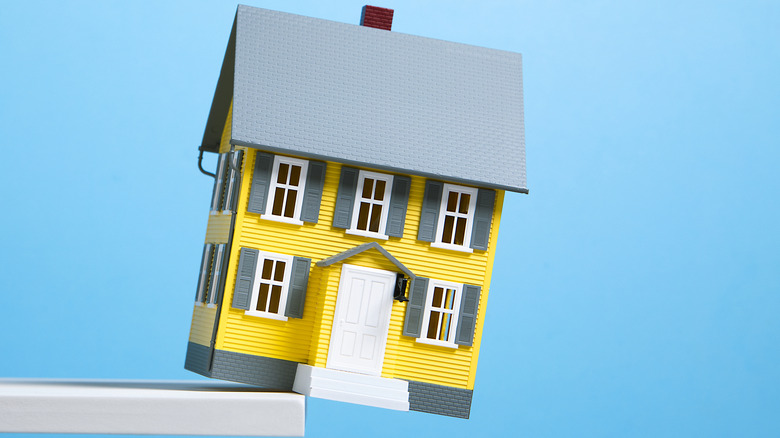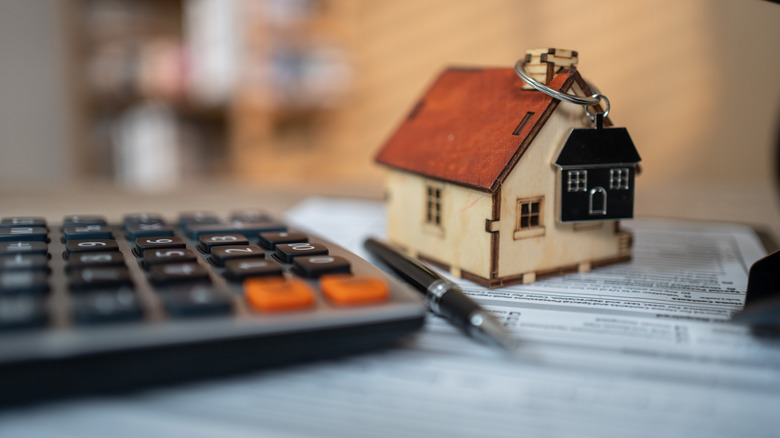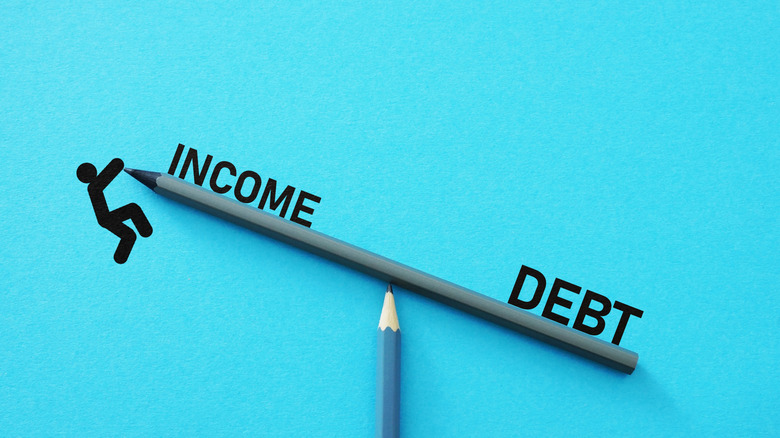If Your Mortgage Costs More Than This, You're Officially House Poor
House poor is a term that's been thrown around a lot in recent years. Both rent and mortgage costs have seen sharp expansions since the early days of the pandemic, meaning no one is spared from the trend of stretched budgets. The concept of being house poor is fairly simple, with anyone spending an extensive portion of their monthly income on housing — usually at the expense of other financial obligations — qualifying. However, homeowners who bought their property in the last two or three years are more likely to truly understand the term, having been hit with a financial double-whammy of higher median home sale prices and higher average interest rates.
Both renters and owners can find themselves worrying about losing their housing if their budget becomes too tight. With that said, even a property owner with plenty of equity in their home can find themselves struggling financially if they don't maintain a balanced budget that includes their ongoing monthly mortgage obligations. Similarly, homeowners can also have their property repossessed by the bank and even sold in foreclosure. This takes away the option to leverage any built up equity and can leave people starting from scratch. While pinning down the exact financial boundaries of being house poor can seem difficult at first, it's important to understand that the financial considerations ultimately rely on your individual income and budget.
How much you should spend on housing
First of all, whether you're an owner or renter, the rule of thumb is that your total housing costs should not rise above 28% of your gross monthly income. As of 2023, the average annual salary in the U.S. was $66,622, meaning the typical wage earner took home roughly $5,550 per month before taxes. This means that a typical earner with a single income, adhering to the 28% cap, should spend no more than $1,554 on their monthly housing expenses, while a DINK household with two average incomes could double this figure. It's also worth remembering that 28% isn't necessarily a healthy expense figure but rather the maximum you should be willing to pay.
Unfortunately, according to Business Insider, the average mortgage payment on a 30-year fixed loan was $2,715 as of August 2024, or roughly 49% of the average salary figure for individual earners. Similarly, according to Apartments.com the average monthly rent, as of March 2025, is around $1,558, just inching past that 28% mark. As a result, the current market leaves many people unable to find a place that both meets their needs and fits their budget. Spending more than this recommended cap can ultimately lead you down a path of financial weakness.
Understanding your debts
Another important figure to keep in mind is your debt-to-income ratio. Home buyers who will be taking on a new mortgage loan to finance their purchase should be particularly focused on this number since banks will heavily focus on it. Beyond the 28% cap that signals a healthy housing budget, if your total expenses directed at servicing debts (including your new mortgage loan) ends up rising above 35% of your gross income, you could face difficulties paying off your mortgage.
While renters ultimately have the ability to leave their rental agreement behind and move on to a different, potentially cheaper place to live, homeowners have far less flexibility. Market conditions might allow you to sell your home and bag a nice profit on the equity you've built up, but this is absolutely not guaranteed. In fact, it's entirely possible to find that your home is actually now valued lower than the price you paid for it. This is especially true for buyers who purchased during the peak pandemic rush on the market with homes selling in record time and at astronomical prices.
Using the same example figures and factoring in other monthly repayment obligations you may hold, a 35% total debt cap would place an average wage earner's debt repayment figure at $1,943 in total monthly repayment volume (or $3,886 for a two-income household). This includes your mortgage, student loans, credit cards, car payments, and any other debt you might have. Anything above this figure and you'll likely feel a squeeze in your budget.
The hard cap on financing options
Ultimately, everyone's financial picture will be their own. For instance, you may have plenty of student loans factoring into your repayment obligations and no credit card debt. Repayment strategies for student loans have become a bit more complicated in recent years, so aggressively digging into these accounts to pay off the remaining balance may not be the best solution for everyone. However, no matter what your finances look like, there is one key figure you'll need to keep in mind. While 35% is still the best rule of thumb for your debt-to-income ratio, 43% serves as the actual ceiling when it comes to eligibility for financing a new home purchase.
Using average salary data again, this means that the typical earner will need to owe less than $2,387 ($4,774 for two average incomes) in monthly debt repayment volume in order to qualify for a new mortgage. Also, at the absolute maximum you may qualify with 35% of that debt going toward your existing mortgage payments (a per earner figure of $1,943, leaving just $444 leftover to cover all other combined debts you might owe). These figures might qualify you for a mortgage loan, but you can expect to have a hard time finalizing the details at this extreme end of the spectrum. Similarly, if you're spending nearly 50% of your monthly income on servicing debts you will almost certainly find yourself falling behind elsewhere, leaving you definitively house poor in the process.



